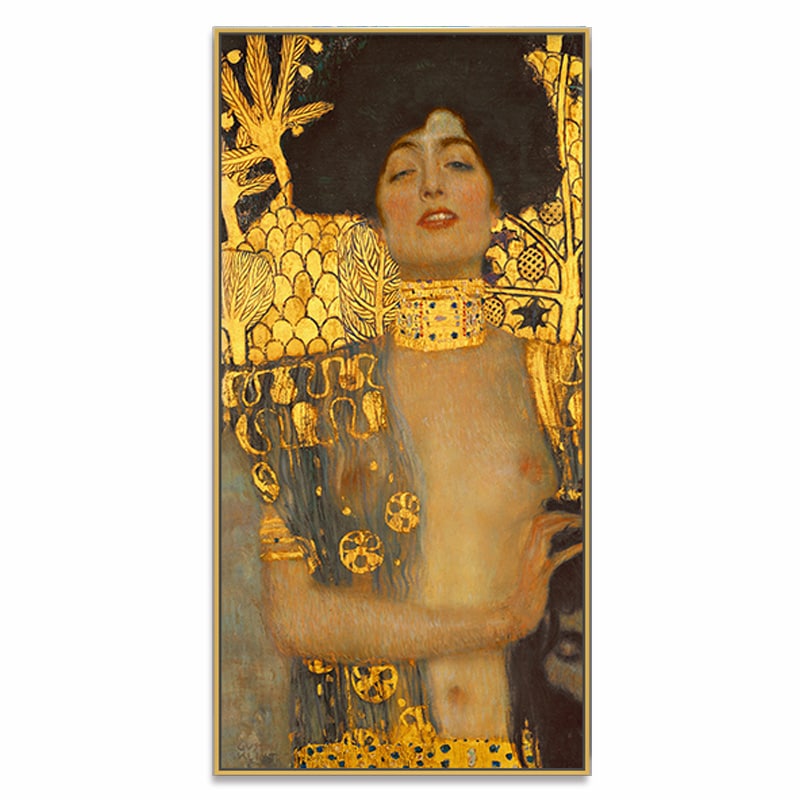Austrian painter Gustav Klimt (1862 –1918) was the most prominent member of the Vienna Secession movementthe Viennese interpretation of Art Nouveau. He is best known for his paintings, murals, and other objects d’art, which often incorporate gold leaf and feature the female body as the main subject. At an early stage of his artistic career, he painted architectural decorations in a traditional style. When later cultivating a more personal style through the influence of Japanese prints, he was criticized for the use of eroticism, which was perceived as being pornographic. With the exception of his early work, Klimt painted portraits only of women.
Klimt did not accept any further public commissions but proved himself highly successful with his Golden Phase symbolist paintings. In his artwork, he incorporated lavishly painted figures with allusions to sexuality and the human psyche, often carrying messages of sexual liberation, pleasure, and mental burden. His pictures express an intense and heartfelt connection between the artist and his models. Klimt’s most iconic piece, “The Kiss” manifests this connection most exquisitely. Some of his murals featuring voluptuous nudes scandalised the Viennese elite. However, for many artists, including fellow Austrian artist Egon Schiele, he was an important mentor, and his successes were also publicly recognized: In 1911 his painting “Death and Life” received the first prize in the world exhibitions in Rome. Klimt died in Vienna in 1918, having suffered a stroke and pneumonia due to the worldwide influenza epidemic of that year, he left numerous paintings unfinished behind.

